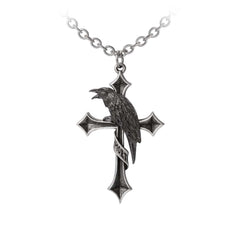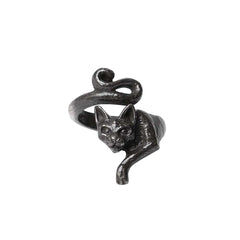
Goth clothing. Just the phrase conjures images of black lace, fishnet stockings, and an aura of mystery. But what lies beneath this aesthetic? Dive with me into the depths of goth fashion, where darkness meets expression in a mesmerizing dance of self-identity.
The roots of goth fashion run deep, tracing back to the late 1970s and early 1980s. Emerging from the gothic rock music scene, goth culture found its voice through fashion, embodying themes of melancholy, romanticism, and rebellion. Today, goth fashion has evolved into a diverse tapestry of styles, encompassing everything from Victorian elegance to cyberpunk futurism.
At its core, gothic clothing serves as a form of self-expression, allowing individuals to embrace their darker sensibilities and carve out their unique identities. It's not just about wearing black; it's about channeling emotions and experiences into a visual language that speaks volumes without uttering a word.
 One of the defining features of goth clothing is its penchant for black. Black isn't just a color in the goth wardrobe; it's a statement. It symbolizes defiance against societal norms, a rejection of the mundane in favor of the extraordinary. But within this sea of darkness, there exists a rich tapestry of textures, fabrics, and styles that add depth and complexity to the aesthetic.
One of the defining features of goth clothing is its penchant for black. Black isn't just a color in the goth wardrobe; it's a statement. It symbolizes defiance against societal norms, a rejection of the mundane in favor of the extraordinary. But within this sea of darkness, there exists a rich tapestry of textures, fabrics, and styles that add depth and complexity to the aesthetic.
Take, for example, the Victorian-inspired element's often found in goth fashion. Corsets, lace, and ruffled blouses evoke images of a bygone era, adding a touch of elegance and sophistication to the ensemble. These garments harken back to a time of opulence and decadence, where beauty and darkness intertwined in a delicate dance.
On the opposite end of the spectrum, we have the cybergoth subculture, where neon colors, PVC, and industrial accessories reign supreme. Drawing inspiration from science fiction and cyberpunk aesthetics, cybergoth fashion embodies a futuristic vision of rebellion and individuality. It's a bold departure from traditional goth attire, yet it remains firmly rooted in the same ethos of self-expression and defiance.
But gothic clothing isn't just about the garments themselves; it's also about how they're worn and styled. Accessories play a crucial role in completing the look, whether it's a statement choker, studded boots, or intricately adorned gloves. These finishing touches add personality and flair, transforming a mere outfit into a visual manifesto of one's innermost desires and fears.
Yet, for all its emphasis on darkness and defiance, goth fashion is inherently inclusive. It welcomes individuals of all backgrounds and identities, offering a sanctuary where they can express themselves freely without fear of judgment. In a world that often seeks to box us into rigid categories, goth culture celebrates the beauty of individuality and nonconformity.
 Moreover, goth clothing serves as a form of armor, empowering individuals to navigate the complexities of everyday life with confidence and resilience. It's a shield against the pressures of conformity, a reminder that it's okay to embrace the shadows within ourselves and find beauty in the darkness.
Moreover, goth clothing serves as a form of armor, empowering individuals to navigate the complexities of everyday life with confidence and resilience. It's a shield against the pressures of conformity, a reminder that it's okay to embrace the shadows within ourselves and find beauty in the darkness.
In recent years, goth fashion has experienced a resurgence in mainstream culture, with designers and brands drawing inspiration from its dark allure. Yet, for many within the goth community, the true essence of the aesthetic lies not in the clothes themselves, but in the sense of belonging and acceptance it fosters.
In conclusion, goth clothing is more than just a fashion statement; it's a manifestation of the human spirit in all its complexity and contradiction. It's a celebration of individuality, a rejection of societal norms, and a tribute to the beauty that lies within the shadows. So the next time you see someone adorned in black lace and leather, remember that beneath the surface lies a world of depth and emotion waiting to be explored.
